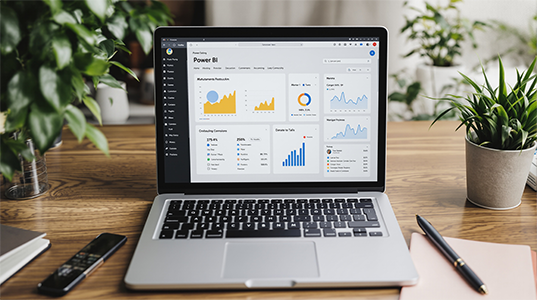From Reactive Compliance to Proactive Insight
Many organisations still handle health and safety reporting as a compliance task rather than a source of insight. Data is gathered reactively through spreadsheets, emails, and manual inspection notes, often only when an audit is approaching or after a near miss or incident has occurred. This approach leaves blind spots and limits the ability to anticipate risks before they become costly problems.
Business Intelligence changes that. By consolidating data from disparate systems, incident logs, maintenance systems, training records, and compliance reports into one live reporting platform, BI turns fragmented information into real-time visibility. It gives decision makers the power to manage risks proactively and build a culture of prevention rather than reaction.
Bringing Compliance Data Together
Health and safety information typically sits across multiple systems such as Asset Management Systems, Enterprise Resourcing Planning (ERP), HR applications, skills and training registers, inspection reports, and incident tracking systems and spreadsheets. BI platforms such as Microsoft Fabric and Power BI bring all of this together in a single, trusted view.
That means:
- Dashboards automatically present the latest information without the need for manual updates.
- Data lineage and governance provide clarity on how each figure is calculated.
- All users operate from a unified version of the truth, reducing redundancy and confusion.
Managing Risk Before It Escalates
A common challenge in health and safety management is coordinating corrective actions for incidents and near misses. Each event often triggers multiple steps such as investigation, assigning follow up tasks, verification, and closure, with notifications and approvals required at every stage. When managed manually, this process can quickly lose visibility, cause delays in response, and allow important actions to slip through the cracks.
By integrating BI into this process, organisations gain a live view of where each corrective action stands. Dashboards can highlight overdue tasks, send automatic notifications to responsible people, and track completion trends over time. This creates a transparent feedback loop where risks are managed quickly, lessons are captured, and performance improves across the board.
Real time dashboards can also reveal patterns in equipment safety checks, training compliance, or incident frequency, while predictive models identify areas where near misses are trending upward. Automated alerts help safety teams act before a potential hazard becomes a serious incident.
Understanding Trends and Driving Improvement
With BI, health and safety data becomes a continuous learning system rather than a record of past events.
- Compare performance year over year to track reductions in incidents and near misses
- Identify recurring patterns in hazards, training gaps, or compliance issues
- Link training and maintenance completion rates to improvements in safety outcomes
This turns compliance reporting into a foundation for strategy, planning, and measurable improvement.
Ready for Every Audit
Having and effective BI strategy in place, eliminates the last-minute rush when an audit happens.
- Historical data is traceable, showing every inspection, report, and corrective action
- Interactive reports provide the evidence behind every metric
- Built in audit trails and user logs demonstrate accountability under standards such as ISO 45001
Beyond Compliance
Using BI for health and safety management builds more than compliance confidence. It provides transparency for regulators, employees, and management. It reduces downtime and incident costs through early detection and coordinated follow-up. And it strengthens safety culture by providing reliable, real-time data that supports continuous improvement.
Should BI Be Used as a Workflow Management Tool?
Not directly, but it can enhance workflow management significantly. BI is best suited to provide visibility, measurement, and insight into workflows that exist within other systems. The ideal setup is to let dedicated systems (such as incident management or maintenance software) handle the workflow logic, notifications, and approvals, while BI consumes and visualises that data in real time.
This gives you both sides of the picture:
- The operational workflow system ensures actions are assigned, tracked, and completed.
- The BI layer ensures management can monitor progress, spot delays, and identify systemic issues.
In short, BI should not replace workflow tools, but it should illuminate them, turning everyday processes into measurable, accountable, and continuously improving systems.
Final Thought
Health and safety performance should not only be measured when something goes wrong. Business Intelligence helps organisations see risk as it develops, act early, and demonstrate compliance with confidence.
At DATAMetrics, we help organisations turn reactive compliance data into proactive intelligence using Microsoft Fabric and Power BI. The result is stronger governance, safer workplaces, and a more resilient future.







